Here in the northern half of Napa Valley — what locals call upvalley — spring break is underway. Yes, schools are out this week, but that’s not really what it’s all about here in wine country. Nor is it about this :

For which we locals are grateful. No, around here spring break means bud break, a moment every vineyard manager and wine maker and oenophile awaits with baited breath. When it happens, it’s not exactly a spectacle.
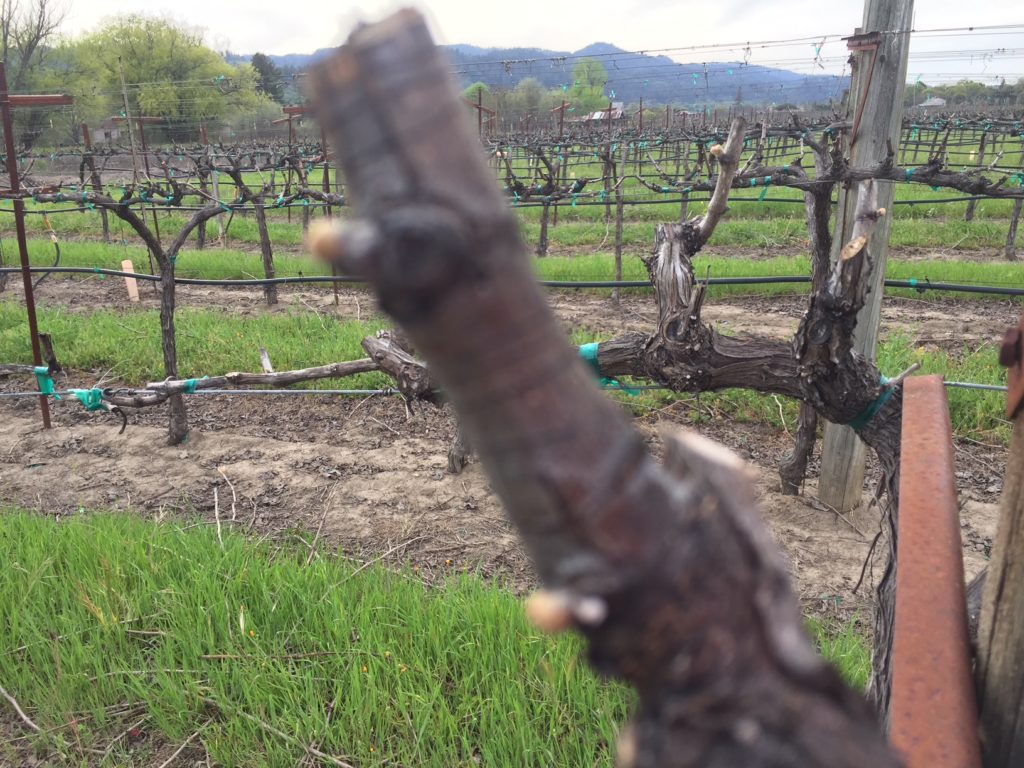
Pardon the blurry close-up, but if you squint you may be able to make out those tiny pale protuberances on the edges of what looks like a stick in the foreground. It’s not a stick, it’s one of the pruned canes of a grapevine, and those little whitish knobs are the very first evidence of bud break. If you’re not paying rapt attention, you could miss it completely, but this, my friends, is the annual phenomenon that makes Napa Valley, well, Napa Valley. Think of it as the birth of Vintage 2019. In another couple of weeks, depending on their location on the floor or slopes of the valley, the vines will look like this:
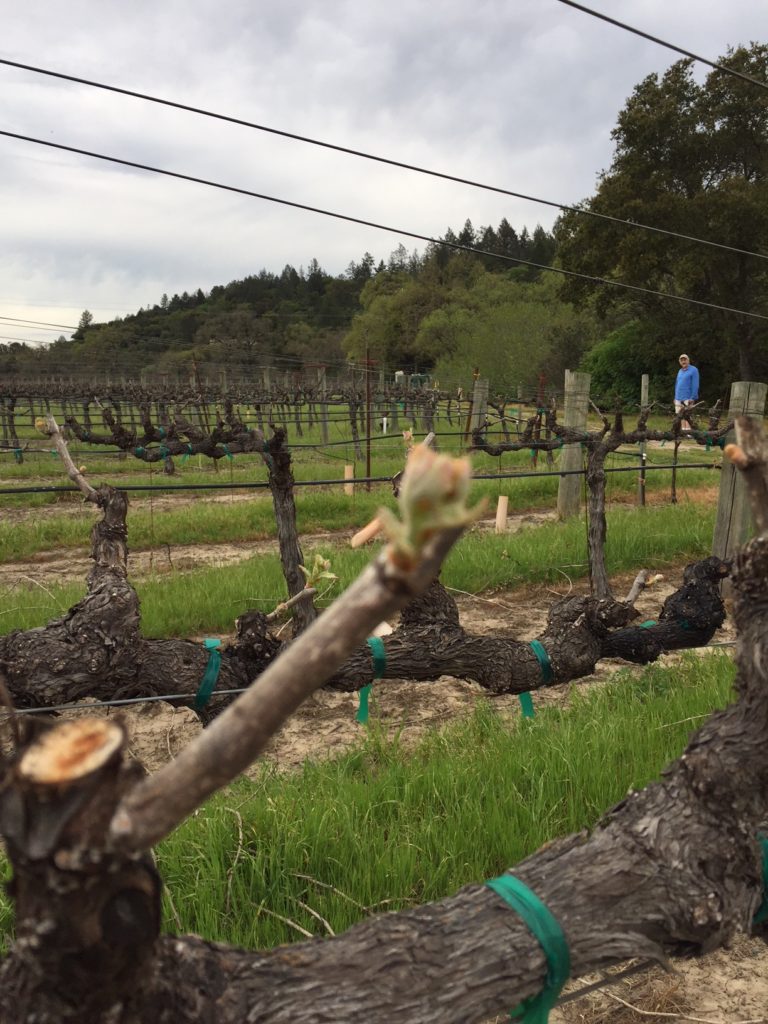
Still not exactly a thrill. But by the end of April, leaves will unfurl and even the gnarliest of zinfandel vines will begin to soften with greenery.
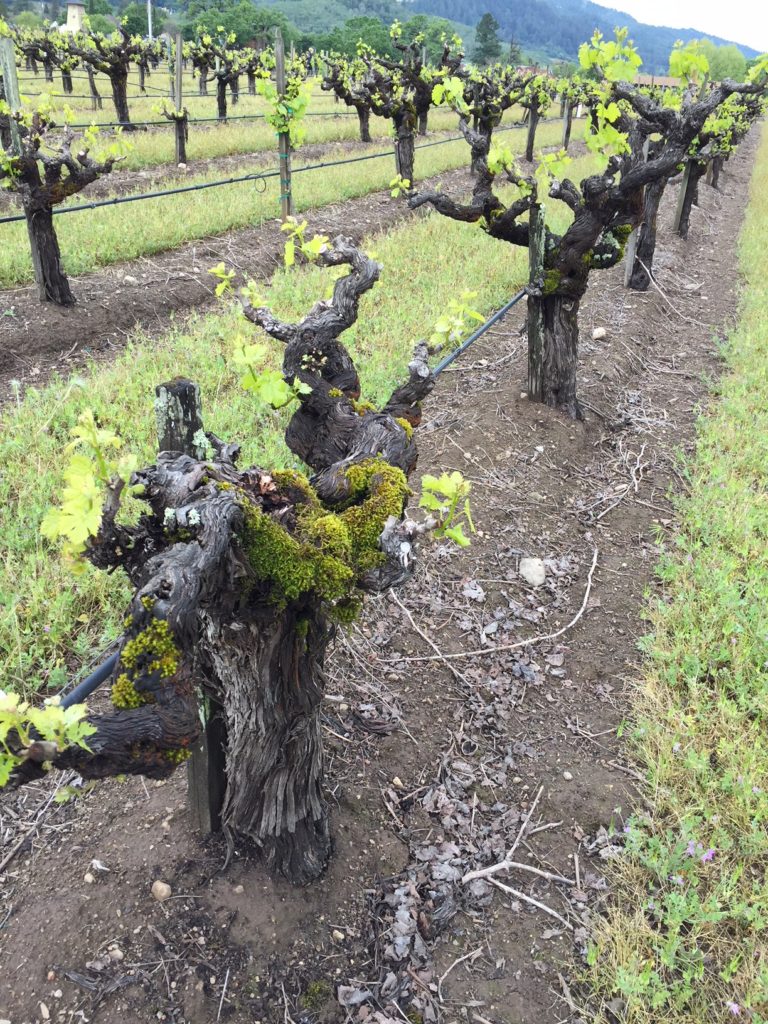
Once the growing season gets underway, things develop quickly. Our walks through the vineyards reveal progress on an almost daily basis. Before long, the vines will be flowering, sporting tiny bunches of wee blossoms, each of which has the potential to become a grape. Again, this is a subtle process, one that is easy to miss. But it’s a high-stakes time for the vintners, especially when there is danger of frost. This is when those big fans you can see posted in vineyards come into play, circulating the cold air. Counterintuitively and depending on a vineyard’s particular microclimate, the vines may be sprayed with water to coat the blossoms in a protective layer of ice. At some point, pollination happens. I’ll spare you the talk about the birds and the bees, but when the little flowers have done their thing and drop off the vine, they leave behind perky little stalks of incipient grape berries.
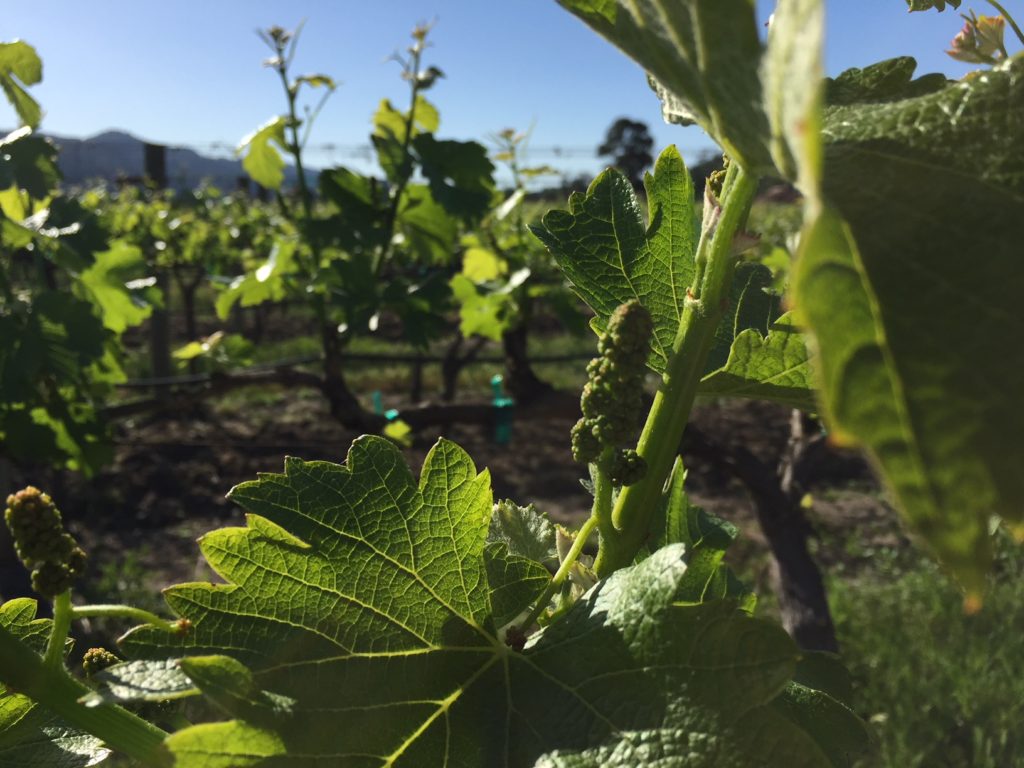
This phase is called fruit set, and it’s another period of anxious vigilance for growers, who still have to worry about frost until the fruit is fully set and the weather warms up. As it reliably does, or at least has so far (climate change is a topic of bone-jellying angst in wine country). As the Napa Valley Vintners Association will proudly tell you, the mediterranean climate that blesses the valley and that has so much to do with the consistent quality of the region’s wine exists on only 2% of the earth’s surface.
Like grapes, it’s the 2% zone in which I flourish best. I feel as lucky and contented as any deep-rooted vine to live here, and fortunate indeed to watch the progression of the yearly cycle from dormancy to harvest.
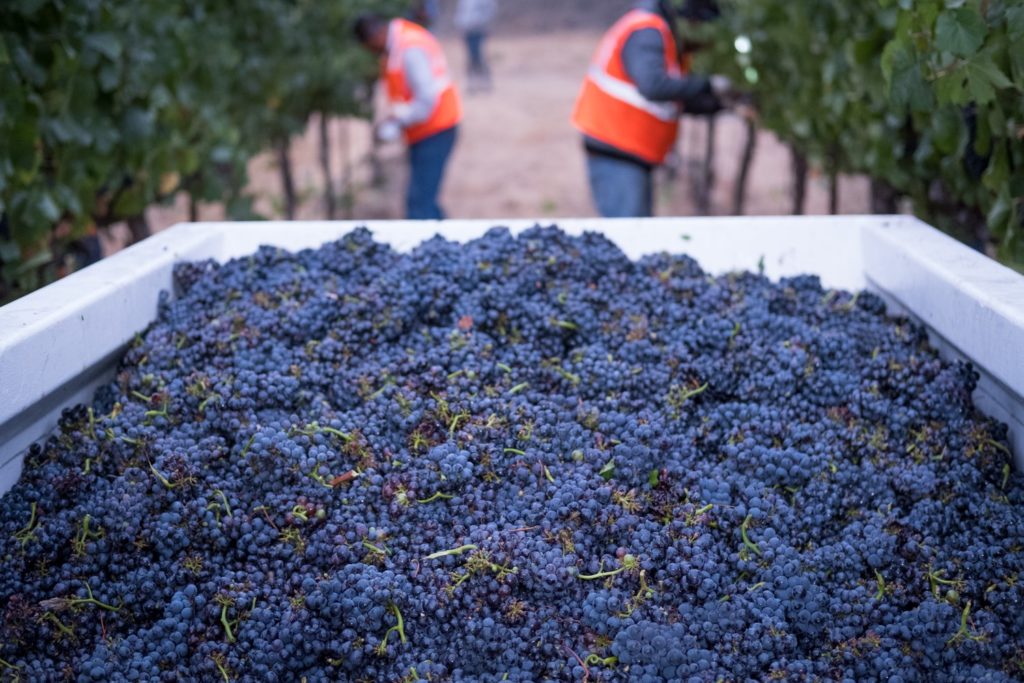
But I’m getting ahead of myself. Right now it’s spring, breaking anew as it does in its quietly miraculous way every year. I wish you, in whatever microclimate you have taken root, a glorious season of renewal.

I really liked seeing these pictures and reading your explanations. I visited California for the first time about 3 years ago when we were in the Sonoma Valley for a wedding. That was in August. It’s hard to picture the different phases of the vineyards, especially when the buds are just “breaking!”
You’ll have to schedule more visits, Barbara!
Oh, Jan, you live in such a beautiful place! Thank you for all the photos. I will have to experience spring in Napa Valley vicariously through you. I must try to convince Bill to do the Napa to Sonoma half marathon again – one of my favorites!
Let me know when you do! We get deals on wine tasting, being locals and all 🙂